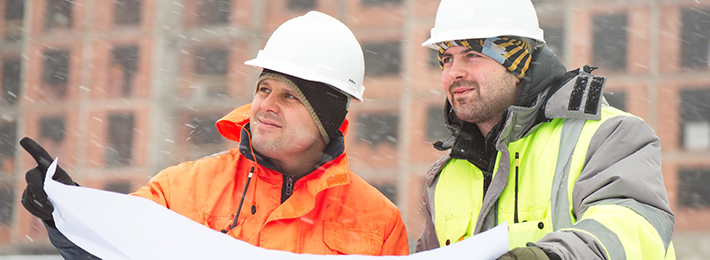Winter is coming!
29 May 2017, Featured, Prove Your Know How, Safety

Anyone who works outside in harsh conditions knows the chilly season takes its toll. With temperatures dropping, it’s time to think about protecting yourself and your workers
from the elements
The effects of the cold can range from an increased risk of injury and a reduction in work rate and quality, to a greater potential for damage to plant and equipment. The cold can also affect people’s ability to concentrate on the task at hand.
Working in cold temperatures can increase irritability and frustration and may even incline people to take shortcuts to finish faster.
Even moderately cold temperatures can increase the likelihood of workplace incidents.
This is because the body’s response to cold causes a decrease in manual dexterity, fingertip sensitivity and muscle strength. The degree of coldness can be underestimated if other factors such as wind chill are not considered.
People working outside should try to eliminate, or at best isolate, cold hazards. However, eliminating hazards can be difficult. Consider the following controls when working in the cold.
Food, shelter and wellbeing
Food and liquid intake are essential to maintain body heat and prevent dehydration.
More energy is exerted working in cold conditions, as the body is working hard to keep warm.
WorkSafe states that if continuous work is carried out in temperatures below 0°C, heated shelters such as cabins or ‘smoko’ rooms should be made available.
A strict timetable for breaks should be implemented to allow employees to warm up and change clothes if needed.
Training
Workers and supervisors should be trained to recognise the symptoms of cold exposure, such as hypothermia. Having a trained first aid person is also highly recommended.
Employees should be informed about PPE, safe work practices and emergency procedures in case of injury. While working in the cold, a buddy system should be used to look out for one another.
Personal Protective Equipment (PPE)
Clothing should be worn in multiple polypropylene, polyester or merino layers, because the air between the layers provides better insulation. The outer layer should be hi-vis, rain and wind-proof and allow for easy opening and removal.
Exposed areas such as the head, hands and feet are just as important as the body. Gloves are an obvious option; however, these can become bulky and affect a worker’s manual handling, so a better option is to provide warm air blowers or insulated handles on tools.
Buy footwear that is well padded, insulated and made from materials such as leather, which allows the shoes to breathe. A great deal of heat is also lost through the head, a problem compounded by the fact that hard hats do not provide protection against the cold.
If a hard hat is necessary, wear a tightly fitted beanie made of polypropylene or merino underneath.
Equipment
The risk of cold injury can be minimised by equipment choice and design. Plant, equipment and tools should be designed so that they can be operated without having to remove items of PPE.
The more complex or fiddly the activity, the greater the likelihood that PPE will be discarded during the process, which leads to increased risk.
Plan
To avoid harsh winter conditions, plan work that is appropriate to the weather. Check weather reports before planning your jobs, so that outside tasks can be done on the best possible day.
If you cannot be adequately protected from the effects of the cold, then work must be suspended or rescheduled to remove the risk of harm.
Following these steps will ensure that winter does not slow you down and keep your team productive, happy and keen.
Want to make sure you’re on track with health and safety? Site Safe’s expert health and safety advisors can help you figure out what improvements you need by auditing your site. Go to www.sitesafe.org.nz to find out more.
Site Safe is a not-for-profit, membership based organisation that promotes, inspires and supports a culture of health and safety in New Zealand construction.
Register to earn LBP Points Sign in
2 Comments
Leave a Reply
You must be logged in to post a comment.




good quiz
yes ok